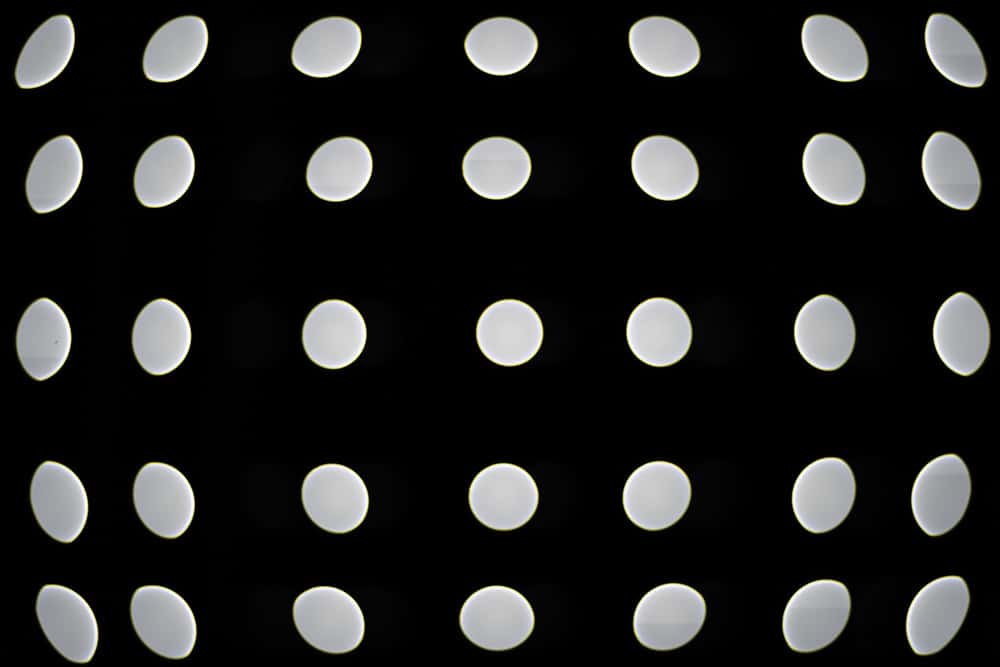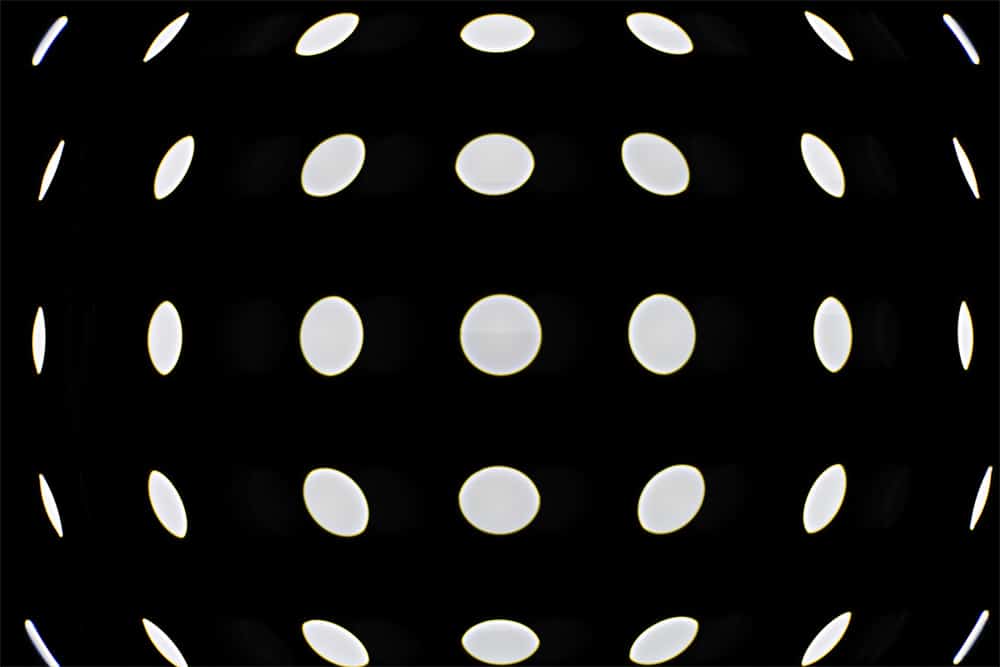This is the 70th in a series of posts on the Fujifilm GFX-50S. The series starts here.
For the nonce, I’m done with my little sprint of evaluating the Sony 12-24. I’ll return to the work I was doing on the Fuji 110/2 and the 23/4 on the GFX. Today’s post is about bokeh, and it’s about the 110. I’ll throw in a couple of comparison lenses, the Fuji 120/4 and the Zeiss 135mm f/2 Apo Sonnar ZF.2, a full frame lens that does very well on the GFX.
There are two pieces to bokeh. The first is what things look like when they are well out of focus (OOF), and the second is how the transition from OOF to in-focus happens. The second is complicated, but the first is very simple. What you see when part of the image is well OOF is each point in the image times the OOF point spread function (PSF, in this case, aka bokeh balls). So you can understand what the bokeh in the OOF regions is gonna look like by looking at the OOF PSF across the frame. After you’ve looked at a few of these images that I’m going to show you today, you can see how the deep-OOF bokeh of just about any lens is going to look like with just about any scene.
The technique that I used to obtain the images below is explained here. I just moved the camera around and captured the PSFs all over the frame, then assembled them in Photoshop.
Here’s what the 110/2 looks like wide open:
In a perfect world, all the balls would be round and constant intensity, with no colors off the gray axis. Hardly any lens can do that wide open. The 110 has a nice flat center disc, and only moderate occlusion as you progress towards the periphery. Good work, Fuji.
Now, the 120 mm, also wide open:
We actually see more occlusion, even though the 120 is two stops slower than the 110. This isn’t bad, but you can tell that bokeh was not the primary objective when Fuji designed this lens. The disks are flat and unchromatic.
Next I’m going to show you the Apo Sonnar wide open. This isn’t fair to Zeiss, because this lens was designed for a full frame camera, and we’re going to look at it much further off axis than you could get with, say, an a7RII.
As you can see, The Apo Sonnar doesn’t do as well and either of the other two lenses, but the disks look good if you forget about the occlusion.
To see what some really (and intentionally) odd OOF PSFs look like, consider these from a Petzval 58/1.9:





Leave a Reply